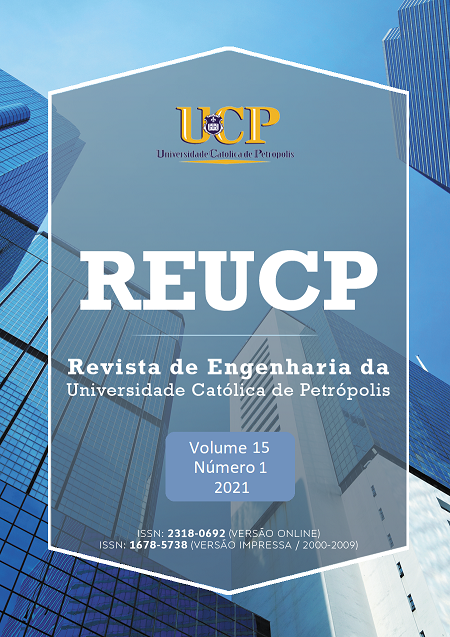A STUDY FROM THE PERSPECTIVE OF THE USE OF SILICEOUS INDUSTRIAL WASTE AS MINERAL ADDITION IN CEMENTITIOUS MATRICES
ORIGIN, PROCESSING AND PROPERTIES
Abstract
The exploration of minerals in metallurgical activities generates residues that demand great environmental management for storage, reuse and mitigation of the environmental impacts associated with this activity. The use of these residues, which are potentially polluting to the environment, can be an interesting option, especially in civil construction, where other industrial residues already known are widely studied and used in the national and international market, such as: fly ash, high slag furnace, silica fume, among others. Specifically, the use of these residues in cementitious matrices can increase the durability and performance of concretes subjected to aggressive chemical conditions. Thus, this article aims to analyze the processing of ash from the production of silicon for the perspective of use as a mineral addition in cementitious matrices, from the attainment of a minimum fineness considered adequate. The physical processing of the residue consisted of grinding cycles in a ball mill, analyzing the influence of grinding time (two or four hours) and the load of abrasive balls (12 or 16 balls) on the fineness of the material, each thirty minutes. In parallel, tests of pozzolanic activities with cement and lime, physicochemical, toxicological, environmental and mineralogical characterization were carried out. As a result, particle size curves associated with the studied variables were obtained and efficient processing with lower energy consumption presented and discussed. The particle size composition, considered optimal for the residue, can be compared with that of the limestone filler. Finally, the processed residue can be considered as a potential material for use as fines or fillers in cementitious concrete and mortar matrices.
Downloads
Downloads
Published
Issue
Section
License
Autores que publicam nesta revista concordam com os seguintes termos:
I. O autor detém o copyright da sua contribuição, que abrange todos os objetos digitais que podem resultar na publicação eletrônica subsequente ou de distribuição. Após a aceitação da obra, o autor concede definitivamente à Editora o direito de primeira publicação da obra.
II. Ao enviar sua contribuição à REUCP, o autor assume e garante que:
1. Não foi previamente publicada nem está sendo avaliada por outra editora ou veículo de comunicação;
2. Não está pendente de revisão, exceto das eventualmente exigidas durante o processo editorial da REUCP;
3. As opiniões emitidas em sua obra são de sua inteira e exclusiva responsabilidade;
4. A obra não contém declaração falsa ou violação de trabalhos ou de direitos de terceiros;
5. A obra não contém difamação, invasão de privacidade ou assunto ilegal;
6. A revista poderá submeter seu original à avaliação de pessoas qualificadas e conservará sigilo e anonimato dos seus avaliadores/pareceristas;
7. A revista tem o direito de efetuar, em seu original, alterações de ordem normativa, ortográfica e gramatical, com vistas a manter o padrão culto da língua, respeitando, porém, o estilo autoral;
8. Concorda em indenizar a Editora UCP por violação de direito autoral ou qualquer outro processo movido por terceiros decorrente da publicação de seu trabalho (artigo ou resenha) na REUCP.
9. Concede à REUCP e à Editora UCP, bem como seus agentes, o direito não exclusivo e perpétua licença para publicar, arquivar e tornar acessível a obra, no todo ou em parte, em todas as formas de mídia agora ou no futuro conhecidas sob uma Licença Creative Commons 3.0 ou seu equivalente, que, para evitar dúvidas, permite que outros copiem, distribuam a obra sob as condições descritas no site da Creative Commons.
10. A pedido da Editora, concorda em fornecer prontamente à Editora UCP, às expensas do próprio autor, prova escrita das permissões, licenças e autorizações para uso de material de terceiros incluídos em sua contribuição (artigo ou resenha) à REUCP.
III. Ao enviar sua contribuição à REUCP, o autor concorda com os termos desta declaração.

